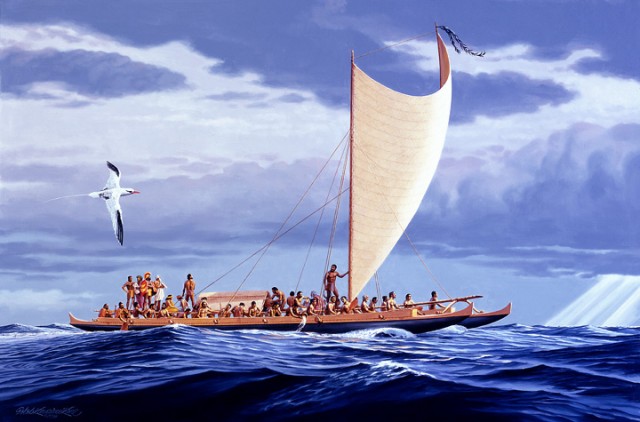Polynesians reached South America, picked up sweet potatoes, went home
Ars Technica » Scientific Method 2013-01-21

The sweet potato was one of a number of crops domesticated in the Andes and, like many of the rest, it became a global crop in the colonial era. But there were some hints that the sweet potato may have already started its global sweep before the Europeans ever took a bite out of one. Some of the early European explorers, including Captain Cook, reported finding it in places like Hawaii. All of which implies that the Polynesians, who managed to spread widely across the Pacific, had made it all the way to South America.
But it was difficult to be sure, given that European travelers later enhanced its spread within the Pacific and elsewhere. This has also created a complex genetic legacy that obscures its origins. Now, researchers have gone back and obtained DNA from museum samples, including some collected by Cook's crew, and find that the DNA indicates that Polynesians made it as far as South America.
Archeological remains appear to place sweet potato cultivation in the core of Polynesia by the year 1200, and it spread with further migrations to places like New Zealand and Hawaii. It's possible that the plant had naturally spread as seeds across the ocean and the Polynesians learned to cultivate it independently. One of the arguments against this is the fact that the Polynesian terms for the crop appear to be closely related to its name in Quechua, the language of the Peruvian Andes. ("Kuumala" and derivatives vs. "kumara" and relatives.)
Read 9 remaining paragraphs | Comments